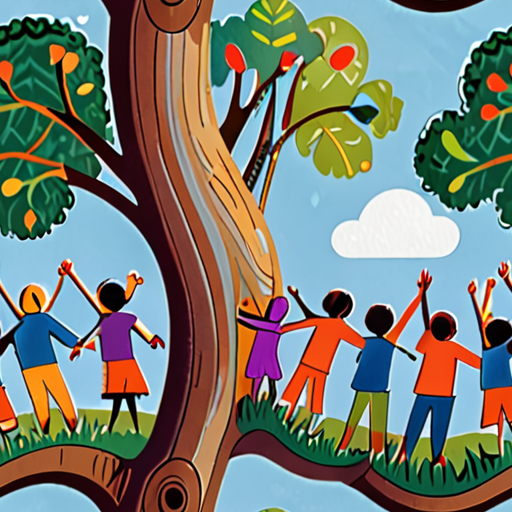Effective community outreach programs play a vital role in fostering stronger, more resilient communities by bridging gaps between individuals, organizations, and local authorities. These initiatives aim to provide essential support and resources to marginalized groups, including the homeless, seniors, and students, thereby promoting social cohesion and overall well-being. By understanding the intricacies of community outreach programs, their numerous benefits, and the diverse range of activities involved, individuals can contribute meaningfully to their communities and help address pressing social issues.

What is a Community Outreach Program?
A community outreach program is a proactive effort by an organization to engage with and support local communities, often focusing on underserved populations.
- These programs typically involve providing professional services, products, or expertise to individuals or groups who may not have access to them otherwise.
- Examples of community outreach programs include:
- Providing healthcare services, such as vaccinations or medical screenings, at local clinics or community centers.
- Offering educational workshops or classes on topics like financial literacy, job skills, or health and wellness.
- Partnering with local businesses or organizations to provide employment opportunities or job training programs.
- Developing and implementing initiatives to promote social justice, equality, and human rights.
Benefits of Community Outreach Programs
Community outreach programs can bring numerous benefits to both the organization and the community, including:
- Improved relationships between the organization and the community.
- Increased visibility and credibility for the organization.
- Access to new markets, customers, or partners.
- Opportunities for skill-building, knowledge-sharing, and capacity development.
- Enhanced reputation and social responsibility.
Key Components of Effective Community Outreach Programs
To ensure success, community outreach programs should incorporate the following key components:
- Clear goals and objectives.
- A thorough needs assessment and analysis.
- A well-defined target audience and engagement strategy.
- Adequate resources and budget allocation.
- Ongoing evaluation and feedback mechanisms.
Best Practices for Implementing Community Outreach Programs
When developing and implementing community outreach programs, consider the following best practices:
- Engage stakeholders and community members in the planning process.
- Conduct regular assessments and evaluations to measure program effectiveness.
- Foster partnerships and collaborations with local organizations and businesses.
- Develop culturally sensitive and inclusive programming.
- Prioritize transparency, accountability, and communication throughout the program.
Conclusion
By understanding what a community outreach program entails and incorporating effective strategies and best practices, organizations can develop and implement successful programs that benefit both themselves and the community.
What Are Outreach Programs?
As a nonprofit organization, we understand the importance of reaching out to our community and providing services to those who may not have access to them.
- We define outreach as the activity of providing services to any population that might not otherwise have access to those services.
- A key component of outreach is that the group providing it is not stationary, but mobile; in other words, it involves meeting someone in need of an outreach service at the location where they are.
Types of Outreach Programs
There are various types of outreach programs that can benefit different populations, including:
- Health Outreach Programs : These programs aim to provide health education, screenings, and services to underserved communities.
- Educational Outreach Programs : These programs focus on providing educational resources, workshops, and classes to individuals who may not have access to traditional educational settings.
- Social Services Outreach Programs : These programs offer support services, such as food assistance, housing assistance, and counseling, to individuals in need.
Benefits of Outreach Programs
Outreach programs can bring numerous benefits to individuals and communities, including:
- Increased Access to Services : Outreach programs can reach people who may not have access to services due to geographical, financial, or social barriers.
- Improved Health Outcomes : Health outreach programs can lead to better health outcomes by providing early interventions, screenings, and education.
- Empowerment and Self-Sufficiency : Social services outreach programs can empower individuals to become self-sufficient by providing them with the necessary skills and resources.
Best Practices for Implementing Outreach Programs
To ensure the success of outreach programs, consider the following best practices:
- Conduct Needs Assessments : Understand the needs of the target population and tailor the program accordingly.
- Build Partnerships : Collaborate with local organizations, businesses, and government agencies to leverage resources and expertise.
- Develop Clear Goals and Objectives : Establish measurable goals and objectives to evaluate the program’s effectiveness.
Resources for Nonprofit Organizations
For more information on implementing effective outreach programs, visit the following resources:
- Nonprofit Management
- Fundraising Strategies
- Community Outreach Programs

Example of a Community Programme
We understand that community programs can take many forms, and we’re happy to share some examples.
-
Providing Hostel Accommodation or Housing Facilities
One example of a community program is providing hostel accommodation or housing facilities to homeless individuals or people who need help. This type of initiative helps those in need by giving them a safe place to live and access to basic amenities.
-
Sponsoring Libraries and Educational Facilities
Another example is sponsoring libraries and taking steps to improve the educational facilities within the locality. By doing so, communities can promote literacy, education, and personal growth among its members.
-
Organizing Community Events and Workshops
Organizing community events and workshops is yet another example of a community program. These events can bring people together, foster social connections, and provide opportunities for skill-building and knowledge-sharing.
-
Implementing Environmental Conservation Initiatives
Implementing environmental conservation initiatives is also a great example of a community program. By working together, communities can protect and preserve their natural resources, promoting a healthier environment for everyone.
At NPO Expert, we believe that community programs play a vital role in building stronger, more resilient communities. We’re committed to helping nonprofits develop effective community programs that meet the unique needs of their constituents.
For more information on how to establish a successful community program, please visit our website at https://npo-expert.com/ .
Additionally, you may want to check out other reputable sources, such as Nonprofit.org and Charity Navigator , which offer valuable resources and insights on community development and nonprofit management.

Outreach Activities
We understand the importance of outreach activities in engaging a large audience and bringing knowledge and expertise on a particular topic to the general public.
- School Presentations: We believe that educating students about various topics is crucial for their development and future success.
- Workshops: Our team organizes workshops to provide hands-on training and equip participants with the necessary skills to tackle real-world challenges.
- Public Talks: We invite experts to share their experiences and insights with our audience, fostering a culture of learning and growth.
- Lab Visits: By organizing lab visits, we enable people to witness scientific experiments and gain a deeper understanding of complex concepts.
- Community Events: We participate in local events to promote awareness about social causes and encourage community involvement.
At NPO Expert, we strive to create a platform where individuals can come together, learn from each other, and make a positive impact on society.
Key Benefits of Outreach Activities
- Broadening Horizons: Outreach activities expose people to new ideas, cultures, and perspectives, broadening their horizons and fostering empathy.
- Building Relationships: By engaging with diverse groups, we establish meaningful relationships and create a network of like-minded individuals.
- Fostering Collaboration: Outreach activities facilitate collaboration among stakeholders, leading to innovative solutions and collective progress.
- Raising Awareness: Through outreach efforts, we raise awareness about critical issues, promoting education and driving positive change.
Best Practices for Effective Outreach
- Identify Target Audience: Understand your target audience and tailor your outreach strategy accordingly.
- Develop Engaging Content: Create content that resonates with your audience and encourages participation.
- Build Partnerships: Collaborate with other organizations to amplify your reach and impact.
- Evaluate Success: Regularly assess the effectiveness of your outreach efforts and adjust your strategy as needed.
Creating a Comprehensive Outreach Plan
As a nonprofit organization, developing a solid outreach plan is crucial for achieving your goals and making a meaningful impact in your community.
- Identify Your Target Audience
- Set Clear Goals and Objectives
- Choose Effective Communication Channels
- Develop a Content Strategy
- Build Relationships and Partnerships
- Monitor and Evaluate Progress
Determine who your ideal audience is and what their needs and pain points are. This could be donors, volunteers, community members, or other stakeholders.
Establish specific, measurable, achievable, relevant, and time-bound (SMART) goals for your outreach efforts. What do you want to accomplish, and how will you measure success?
Select the most suitable communication channels to reach your target audience, such as social media, email marketing, events, or partnerships.
Create high-quality, engaging content that resonates with your audience and showcases your expertise. This could include blog posts, videos, infographics, or case studies.
Foster relationships with influencers, thought leaders, and other organizations that can help amplify your message and expand your reach.
Track your progress, analyze the effectiveness of your outreach efforts, and adjust your strategy accordingly to optimize results.
Best Practices for Outreach Planning
When developing your outreach plan, keep the following best practices in mind:
- Be Authentic and Transparent
- Respect Boundaries and Preferences
- Focus on Value and Benefits
- Measure and Report Effectively
Be genuine and honest in your communications, and always disclose any potential conflicts of interest.
Honor people’s boundaries and preferences regarding communication, and respect their decision to opt-out or unsubscribe.
Educate your audience on the value and benefits of your work, and highlight the positive impact you’re making in the community.
Regularly track and report on your progress, using metrics that align with your goals and objectives.
Tools and Resources for Outreach Planning
To streamline your outreach planning process, consider utilizing the following tools and resources:
- Social Media Management Tools
- Email Marketing Software
- Project Management Tools
Platforms like Hootsuite, Sprout Social, or Buffer can help you schedule and publish content across multiple social media channels.
Tools like Mailchimp, Constant Contact, or Campaign Monitor enable you to create and send targeted email campaigns.
Applications like Asana, Trello, or Basecamp facilitate collaboration and task management among team members.

What Are Public Outreach Activities?
As a nonprofit organization, understanding public outreach activities is crucial for building strong relationships with your community, stakeholders, and supporters.
- Public outreach involves connecting with your target audience to educate them about your mission, goals, and initiatives.
- This can be achieved through various channels, including social media, email marketing, events, and press releases.
- The primary objective of public outreach is to raise awareness about your cause, promote engagement, and ultimately drive support for your organization.
Types of Public Outreach Activities:
- Community Events: Organize events, workshops, or conferences that bring together stakeholders, donors, and volunteers to discuss pressing issues and share knowledge.
- Social Media Campaigns: Leverage platforms like Facebook, Twitter, Instagram, and LinkedIn to share updates, stories, and behind-the-scenes content that resonates with your audience.
- Email Marketing: Send targeted newsletters, updates, and appeals to subscribers, highlighting your achievements, challenges, and needs.
- Press Releases: Craft and distribute press releases to local media outlets, highlighting your organization’s successes, milestones, and initiatives.
Benefits of Effective Public Outreach:
- Better Community Engagement: Foster meaningful connections with your audience, leading to increased participation, donations, and volunteerism.
- Improved Brand Awareness: Establish your organization as a thought leader, increasing visibility and credibility among stakeholders and potential supporters.
- Increased Donations: Build trust and rapport with your audience, resulting in more generous donations and long-term support.
Best Practices for Public Outreach:
- Develop a Clear Message: Craft a concise, compelling narrative that communicates your mission, values, and goals.
- Identify Your Audience: Understand who your target audience is, what they care about, and how to effectively communicate with them.
- Measure and Evaluate: Track the success of your public outreach efforts, making adjustments as needed to optimize your strategy.
Conclusion:
Effective public outreach activities are vital for nonprofits seeking to build strong relationships with their community, stakeholders, and supporters. By implementing the strategies outlined above, you can increase awareness, engagement, and support for your organization, ultimately driving positive change in your community.

0 Comments